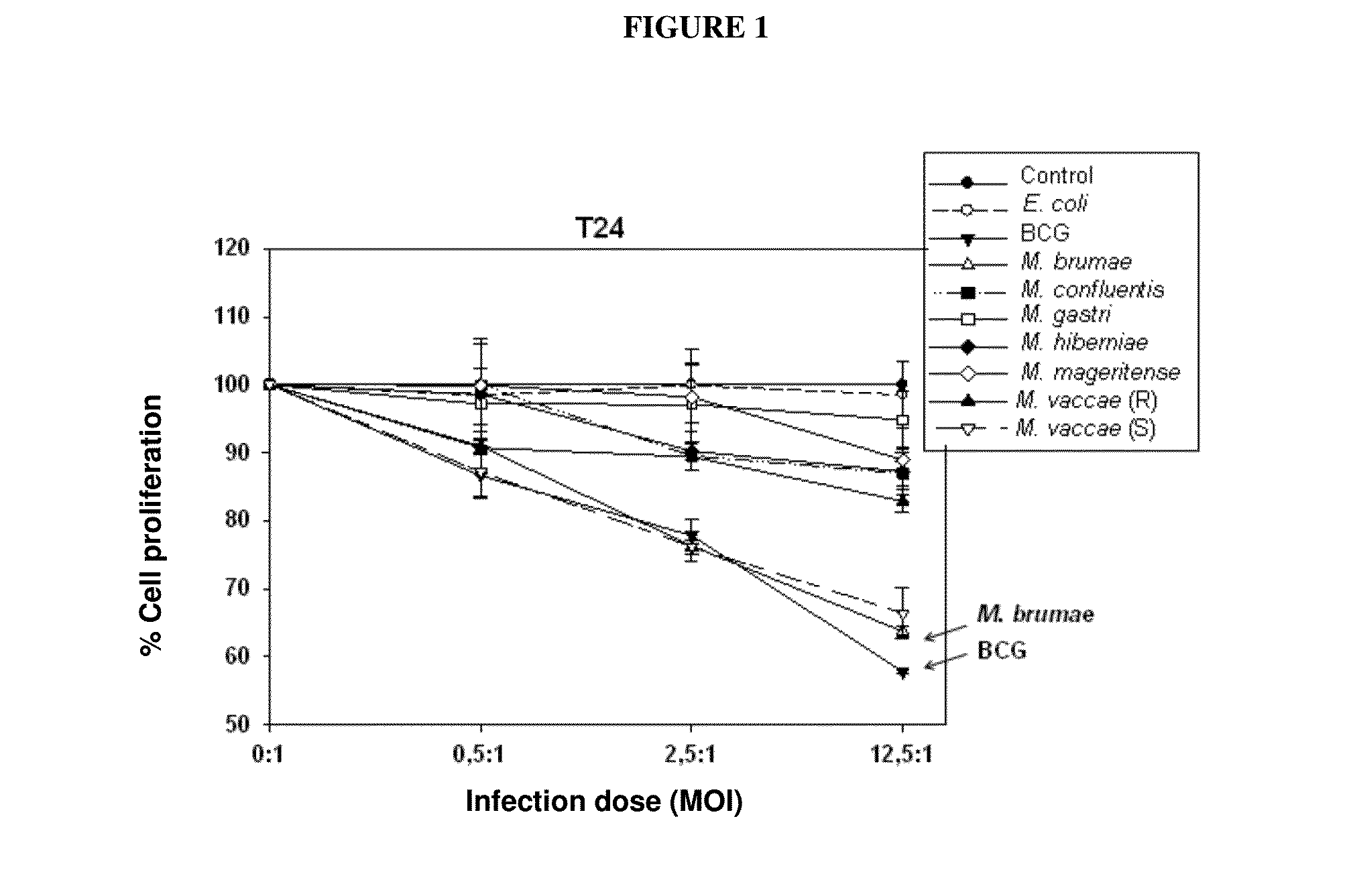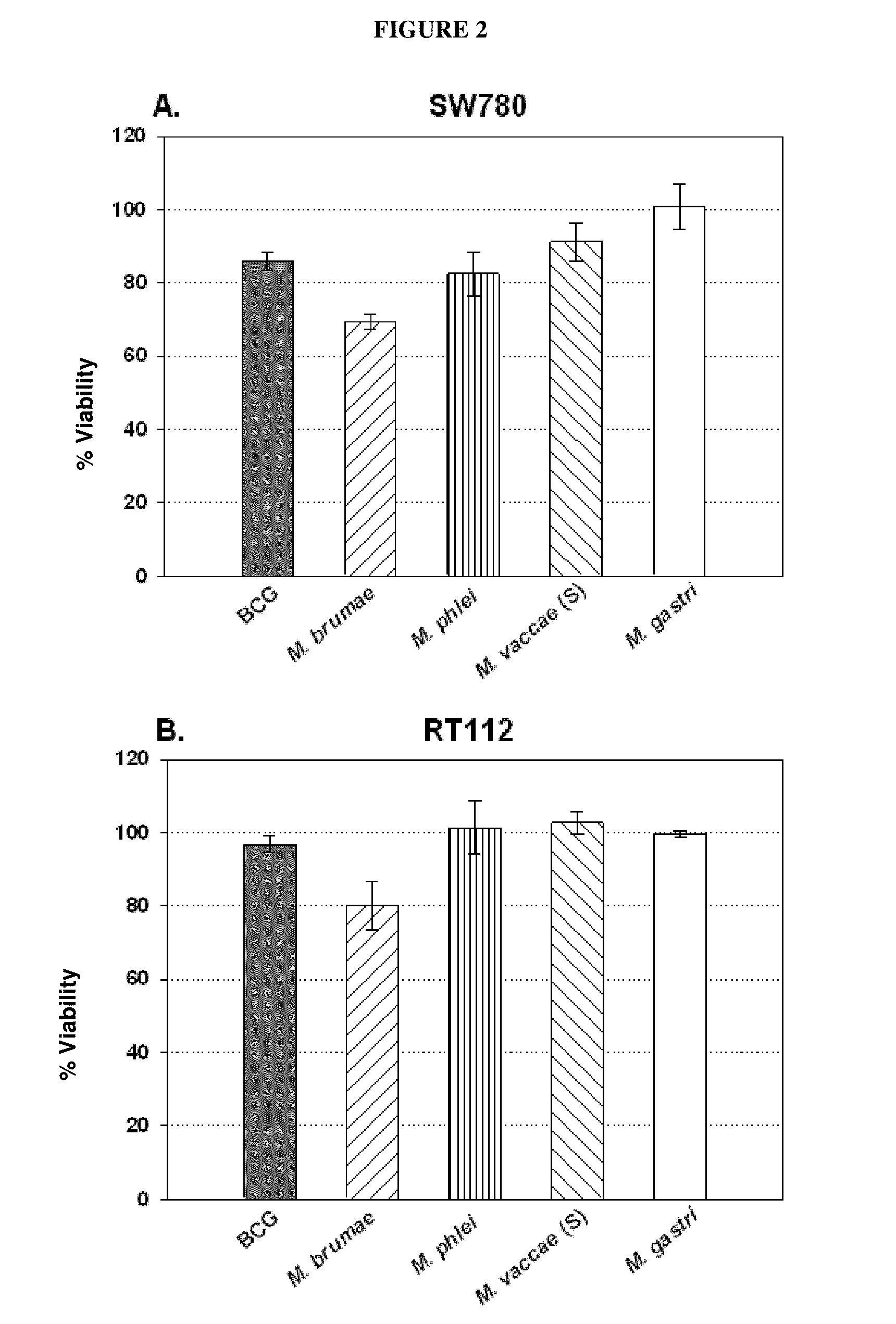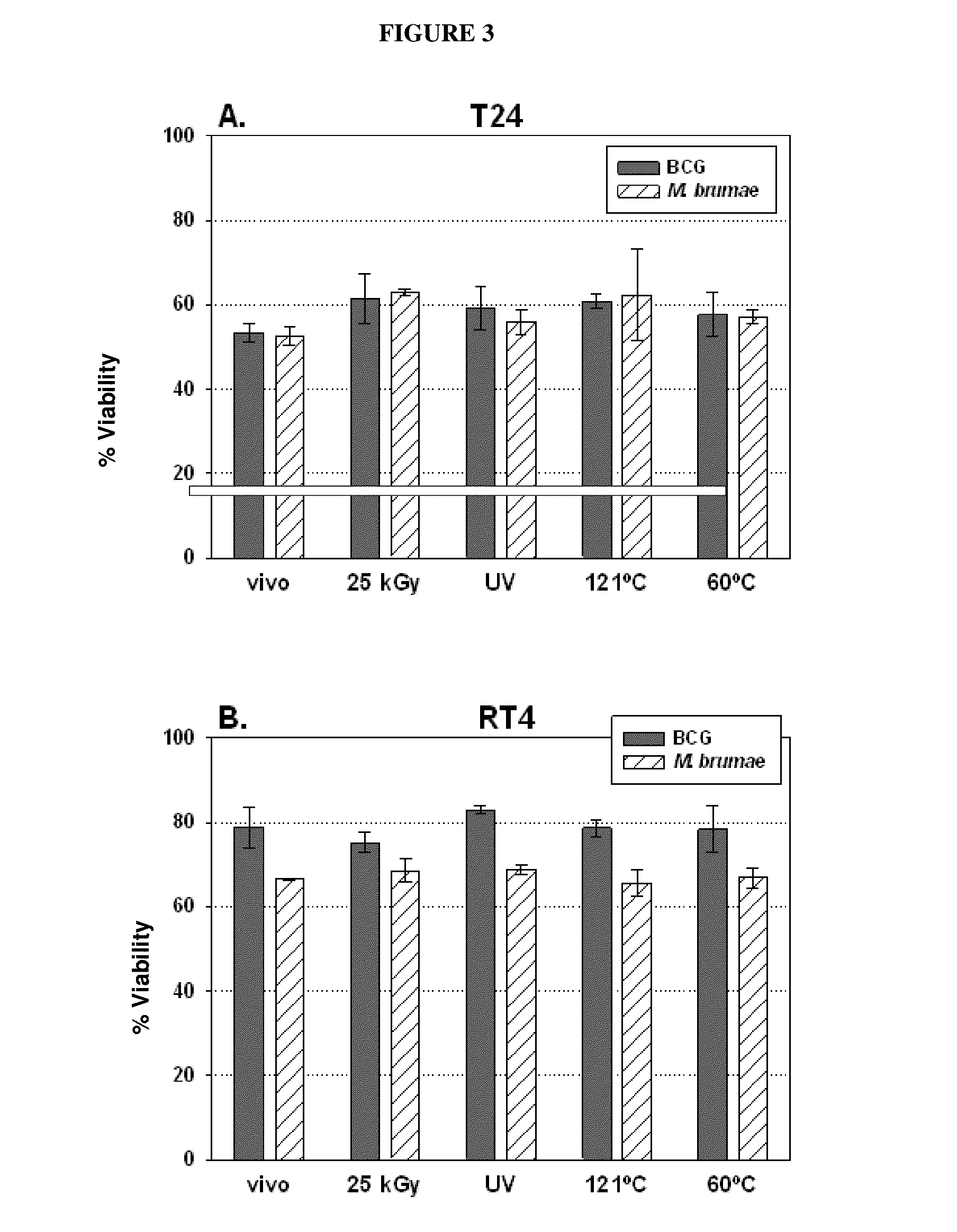Use of mycobacterium brumae to treat bladder cancer
a technology of mycobacterium brumae and bladder cancer, applied in the field of medicine, can solve the problems of not being considered as non-pathogenic, unable to prevent progression of chemotherapy, becoming one of the most expensive cancer treatments, etc., and reducing the risk of disease progression and preventing the risk of metastasis
- Summary
- Abstract
- Description
- Claims
- Application Information
AI Technical Summary
Benefits of technology
Problems solved by technology
Method used
Image
Examples
example 1
Culture and Origin of Microorganisms
[0065]Eight fast-growing environmental mycobacteria were selected for comparison with BCG which was used as a positive control, and two other bacteria—Gram-positive and Gram-negative—which were used as a negative control.
[0066]Such microorganisms were: Mycobacterium bovis BCG Connaught (ATCC 35745) acquired by Aventis Pasteur Laboratories (ImmuCyst). Mycobacterium confluentis (ATCC 49920) and Mycobacterium hiberneae (ATCC 49874) obtained from German Collection of Microorganisms and Cell Cultures. M. brumae, Mycobacterium gastri (ATCC 15754), Mycobacterium mageritense (ATTC 700351), Mycobacterium phlei (ATCC 11758), Mycobacterium vaccae (ATCC 15483) (presenting smooth colony morphology), a rough colony morphology variant of M. vaccae obtained in our laboratory, Escherichia coli (ATCC 10536) and Enterococcus faecalis (ATCC 19433) (the last two microorganisms were used as negative controls) obtained from the Collection of Microbial Strains of our lab...
example 2
Culture of Cell Lines
[0067]Human transitional cell carcinoma cells, T24, J82, RT112, RT4 and SW780, corresponding to histological grades 3, 3, 2, 1 and 1 tumors, respectively, were provided by the Cancer Cell Line Bank of Barcelona Biomedical Research Park (PRBB) (as part of research project: “Thematic Network of Cooperative Cancer Research [RTICC]” funded by the Spanish Ministry of Health, C03 / 010). Cell monolayers were kept in Dulbecco's Modified Eagle's complete medium (DMEM) / Ham's F-12 nutrient mixture (Gibco, Invitrogen, Carlsbad, Calif., USA) supplemented with 10% fetal bovine serum (SBF) (Lonza, Basel, Switzerland), containing 100 U / ml penicillin G (Lab ERN, S. A., Barcelona, Spain) and 100 μg / ml streptomycin (Lab Reig Jofre, S. A., Barcelona, Spain) (complete medium), at 37° C. in a 5% CO2 humidified atmosphere.
[0068]The MB49 mouse bladder cancer cell line was kindly donated by Dr. Thomas Totterman (Rudbeck Laboratory at the Department of Immunology, Genetics and Pathology, ...
example 3
Obtaining of Human Peripheral Blood Mononuclear Cell (PBMC) Culture
[0069]Blood samples were obtained from healthy tuberculosis-negative subjects. All donors gave their informed consent for this study.
[0070]PBMCs were isolated from heparinized blood samples by Ficoll-Hypaque density gradient technique (Lymphoprep™, Comercial Rafer, Zaragoza, Spain) (Boyum, 1968). Trypan Blue stain was used for cell counting. Then, cells were kept at −80° C. until their use or were cultivated in 6-well plates (Nunc), at a concentration of 4×106 cells / well in a RPMI 1640 complete medium without antibiotic, at 37° C. in a 5% CO2 humidified atmosphere.
PUM
| Property | Measurement | Unit |
|---|---|---|
| concentration | aaaaa | aaaaa |
| concentration | aaaaa | aaaaa |
| concentration | aaaaa | aaaaa |
Abstract
Description
Claims
Application Information
 Login to View More
Login to View More - R&D
- Intellectual Property
- Life Sciences
- Materials
- Tech Scout
- Unparalleled Data Quality
- Higher Quality Content
- 60% Fewer Hallucinations
Browse by: Latest US Patents, China's latest patents, Technical Efficacy Thesaurus, Application Domain, Technology Topic, Popular Technical Reports.
© 2025 PatSnap. All rights reserved.Legal|Privacy policy|Modern Slavery Act Transparency Statement|Sitemap|About US| Contact US: help@patsnap.com



